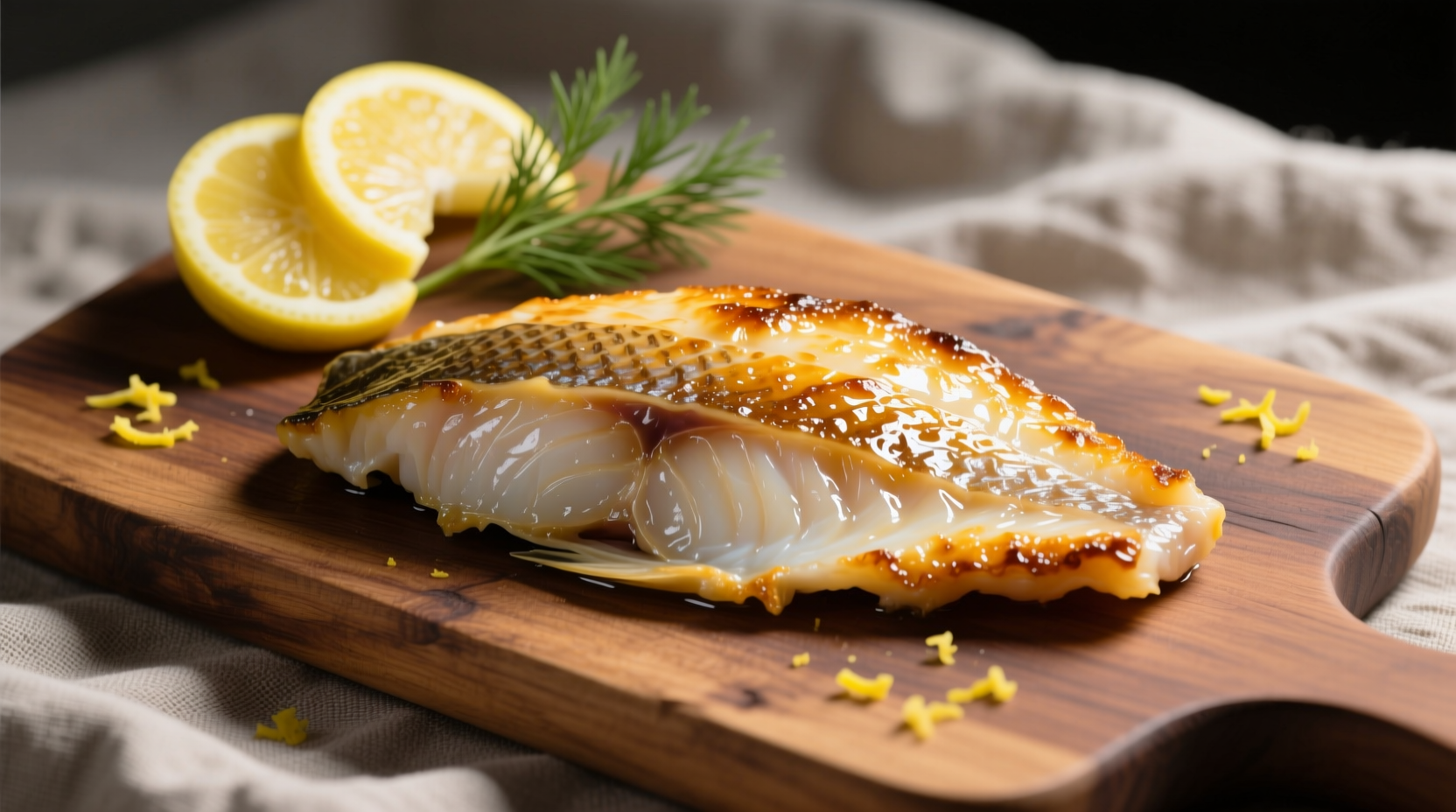Haddock typically cooks in 10-15 minutes depending on thickness and cooking method. The fish is done when it reaches 145°F (63°C) internal temperature and flakes easily with a fork. Thinner fillets (under 1 inch) require 8-10 minutes, while thicker cuts need 12-15 minutes across most cooking methods.
Getting haddock cooking time right separates a perfectly flaky, moist fillet from dry, overcooked disappointment. As a chef who's prepared thousands of fish dishes across professional kitchens and home cooking demonstrations, I've seen how precise timing transforms this delicate white fish. Whether you're baking, pan-searing, or grilling, understanding the exact window for cooking haddock ensures restaurant-quality results every time.
| Cooking Method | Time for 1-inch Fillet | Internal Temperature | Visual Doneness Cues |
|---|---|---|---|
| Baking/Roasting | 12-15 minutes | 145°F (63°C) | Opaque throughout, flakes easily |
| Pan-Frying | 8-10 minutes | 145°F (63°C) | Golden crust, opaque center |
| Grilling | 10-12 minutes | 145°F (63°C) | Char marks, separates from grill |
| Poaching | 8-10 minutes | 145°F (63°C) | Cloudy poaching liquid, firm texture |
| Steaming | 6-8 minutes | 145°F (63°C) | Translucent to opaque, flakes |
Why Haddock Cooking Time Matters
Haddock's delicate texture makes precise timing essential. Unlike heartier fish like salmon, haddock has low fat content (about 1-2%), which means it cooks quickly and can become dry with just 2-3 minutes of overcooking. The USDA Food Safety and Inspection Service confirms that fish reaches safe eating temperature at 145°F (63°C), but visual cues remain critical since thickness varies.
Perfecting Baked Haddock
Baking remains the most forgiving method for beginners. Preheat your oven to 400°F (200°C) and place seasoned fillets on a parchment-lined baking sheet. For standard 1-inch thick fillets, bake for 12-15 minutes. Thinner cuts (3/4 inch) need just 8-10 minutes. The National Oceanic and Atmospheric Administration (NOAA) recommends checking doneness by inserting a fork at the thickest part—if it flakes easily and appears opaque, it's ready. Never press down on the fish while checking, as this squeezes out precious moisture.
Mastering Pan-Fried Haddock
Pan-frying delivers beautiful crust development while maintaining tenderness inside. Heat 1-2 tablespoons of oil in a skillet over medium-high heat until shimmering but not smoking. Pat fillets completely dry—moisture causes steaming instead of searing. Cook for 4-5 minutes per side for 1-inch fillets. The American Culinary Federation notes that proper pan temperature (350-375°F) creates instant sear without overcooking. Reduce heat if the exterior browns too quickly while interior remains raw.

Grilling Haddock Successfully
Grilling haddock requires careful attention to prevent sticking and overcooking. Oil both the grill grates and fish surface generously. For 1-inch fillets, grill over medium heat (375-400°F) for 5-6 minutes per side. The Food and Agriculture Organization (FAO) of the United Nations recommends using a fish basket or aluminum foil for delicate fillets. Haddock is done when it releases easily from the grill and reaches 145°F internally. Avoid flipping multiple times—once is sufficient.
Context Boundaries: When Standard Times Don't Apply
Cooking time varies significantly based on several factors:
- Fillet thickness: Measure at thickest point—each additional 1/4 inch adds 2-3 minutes
- Starting temperature: Refrigerated fish needs 1-2 minutes longer than room-temperature
- Oven accuracy: Verify with independent thermometer—many run 25°F hotter or cooler
- Recipe additions: Sauces or toppings may insulate fish, requiring slight time adjustments
Doneness Indicators Beyond Timing
While timing provides a guideline, these visual and tactile cues confirm perfect doneness:
- Color change: Translucent to opaque white throughout
- Flake test: Gently separate with fork—should flake in large, moist segments
- Texture: Firm but yielding to gentle pressure, not rubbery
- Internal temperature: 145°F (63°C) measured in thickest part
Overcooked haddock becomes dry, tough, and difficult to flake, while undercooked fish remains translucent and doesn't separate properly.
Common Cooking Mistakes to Avoid
Even experienced cooks make these timing errors:
- Not accounting for carryover cooking: Haddock continues cooking 5-10°F after removal from heat
- Overcrowding the pan: Lowers temperature and creates steam instead of sear
- Peeking too often: Releases heat and moisture during critical cooking phases
- Ignoring thickness variations: Thicker portions need longer while thinner ends cook faster
Professional kitchens often remove fish 5°F below target temperature to account for residual heat. For haddock, pull it at 140°F for perfect 145°F final temperature.
Food Safety Considerations
The USDA Food Safety and Inspection Service emphasizes that proper cooking eliminates potential pathogens in fish. While some prefer medium-rare fish, haddock's delicate nature makes undercooking risky. Always:
- Thaw frozen haddock in refrigerator, not at room temperature
- Cook within 1-2 days of purchase for best quality and safety
- Use separate cutting boards for raw fish and other ingredients
- Discard leftovers after 2 days in refrigerator
Practical Timing Tips for Home Cooks
Implement these techniques for consistent results:
- Uniform thickness: Butterfly thicker portions to create even cooking surfaces
- Preheat properly: Ensure oven or pan reaches target temperature before adding fish
- Use visual cues: Time is secondary to appearance and texture
- Rest briefly: Let cooked haddock rest 2-3 minutes before serving
For multiple fillets with varying thicknesses, arrange thicker pieces toward the center of baking sheets or outer edges of pans where heat concentrates.











 浙公网安备
33010002000092号
浙公网安备
33010002000092号 浙B2-20120091-4
浙B2-20120091-4